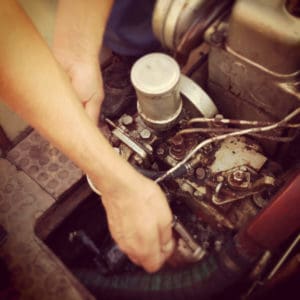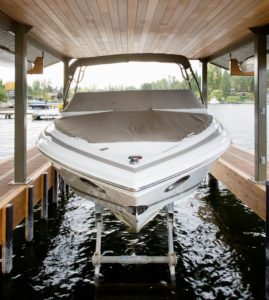Buying a new boat can be very exciting, and you probably just can’t wait to get it out on the water. However, when you get a new boat, there is inevitably maintenance that comes with it. One of those tasks is to get the bottom of the boat painted. Unfortunately, bottom paint can be toxic, difficult to apply, and expensive. So the age-old question remains, how important is it to antifoul my boat?
If you plan to store your boat in any aquatic environment, you will need to apply antifouling paint. By leaving your boat in the water with no protection, you are letting marine life grow and attach to your boat, increasing your boat’s fuel consumption and slowing the boat down on the water.
Antifouling can be one of the more daunting boat projects that you may not wish to undertake. Who could blame you? It’s hard to do, requires the use of dangerous chemicals, and requires at least some knowledge of aquatic vessel painting. Let’s take a deeper look at antifouling and see if it’s a must for you.
Why is Antifouling Important?
When you apply antifouling paint to your boat, you take steps to prevent almost all build-up of marine growth on your vessel. Antifouling is typically used on the boat’s hull but can be used anywhere from the shaft to the propellers continuously in the water.
Fouling is the process of marine buildup on the areas of your boat that remain underwater for an extended length of time. You will notice green slime that collects on the underside of your boat. This slime is a combination of plankton, bacteria, and algae and will only continue to grow on your boat if not cleaned off regularly. When the slime layer starts to thicken up, more local organisms begin to feed off the slime.
If left untreated, you may then begin to see barnacles, seaweed, and tubeworms growing. By not antifouling your boat, the layer of slime can develop and lead to marine growth, which can increase the fuel consumption, affect your top speed, make the boat hard to maneuver, and overall degrade the exterior and the aesthetic of your vessel.
Different Conditions Have Different Antifouling Needs
When your boat is stored in different conditions, there are different needs for antifouling. If you plan to keep your boat in saltwater, you will want to take extra care and get your boat antifouled well. In some cases, an annual application is necessary. Likewise, if you plan to store your boat in freshwater, most locales will require antifouling. If you plan on dry sailing, then there is no need for antifoul.
If you have a full-time cruiser that is always seeing the water, you will need to apply multi-season paint. Even more important, if you are a serious racer, then antifouling is a must. You will want paint that is hard and can be burnished and buffed to a slick finish.
What is Treatment Paint?
Treatment paint contains biocides like xylene and copper oxide to prevent organic matter from adhering to your hull. While formulations and chemicals vary between the types of antifoul paint, so do their applications.
There are different organisms in seawater than in freshwater. This means that the formulations and chemicals used will be different for salinated water vs freshwater. Likewise, the more premium brands tend to use different chemicals than the budget options, and often last longer as well.
Types of Antifouling
Two main types of antifouling will allow you and your boat to have the best care against marine fouling organisms. Both will have different elements, and it is essential to do your research or speak to a professional.
1. Hard Antifoul
Hard antifoul paint is made of copper and biocides that leach into the water over time to prevent marine fouling, but the paint will not wear away from this process. The advantage of hard antifouling is that it can be polished by wet sanding. This makes it possible to achieve a sturdier finish for your hull and is very important to racing boats.
This type of antifoul does require more heavy maintenance than others, and does require scrubbing on a more regular basis than some other methods.
2. Soft/Eroding Antifoul
As the name suggests, this type of antifoul erodes over time, with biocides, copper, and substrate resin all finding their way into the water. Eroding antifoul is easier to paint over and will only need to be replaced when the paint has worn away. However, you may notice that your hull will need to be cleaned and prepared when it is ready to be repainted.
You can look for an eroding paint that reads as “self polishing” antifoul. Over time, when this paint erodes, then the paint will start becoming smoother instead of pitted. The theory behind this is that it improves your boat’s performance over time, at which point the paint has eroded.
We Offer Professional Service And Support For All Your Boating Needs
Corleone Marina at the Balmain Marina has one of the last remaining slipways in Sydney Harbour. Our marina services include the best antifouling and hull and boat maintenance and repairs. We also offer Do-It-Yourself slip way usage on the weekends. We know you just want to get out and enjoy your boat, so let us help with those routine sailing maintenance issues so you can focus on enjoying your vessel.
Contact us today to find out more about our excellent marina services in four stunning Sydney locations. We’ll take good care of you and your boat so you can relax and enjoy sailing worry-free.









